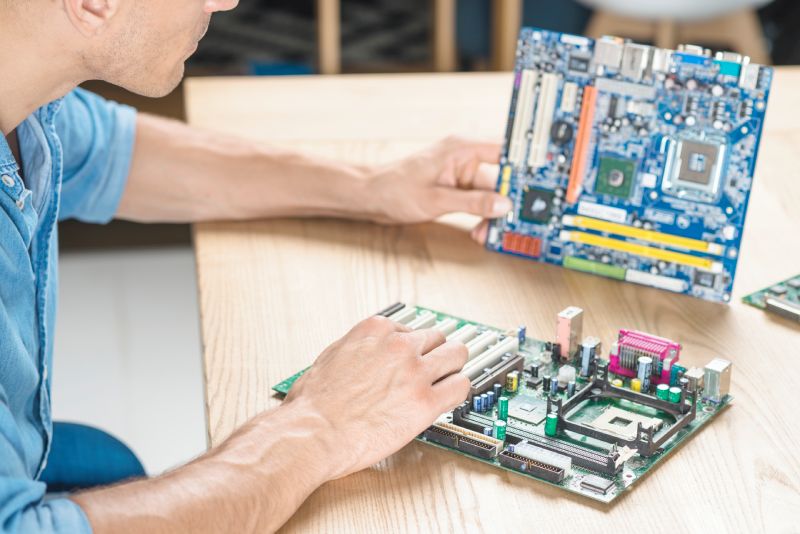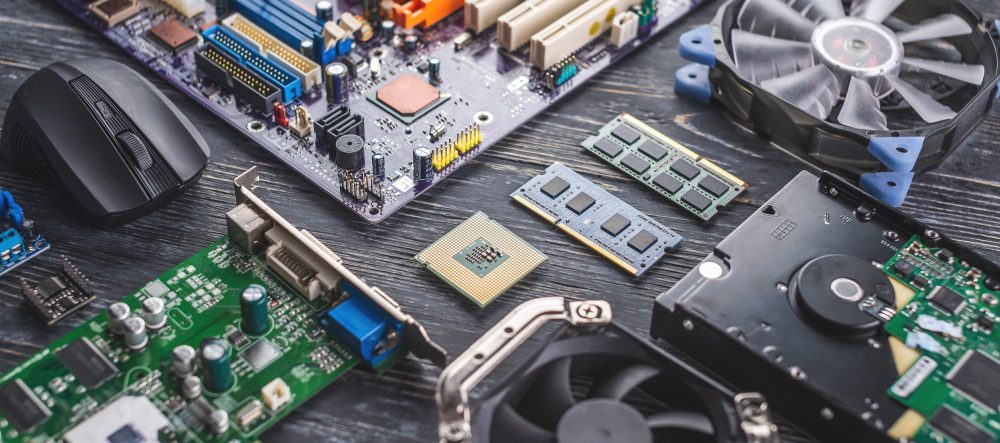Comparing AMD and Intel Motherboards
Introduction
Motherboards are the backbone of any computer system, as they determine what other components can be installed and how they will function. When it comes to choosing a motherboard, there are two primary options – AMD and Intel. These two brands are known for producing high-quality motherboards that are capable of handling a wide range of tasks. In this article, we will be comparing AMD and Intel motherboards to help you make an informed decision about which one is best for your needs.
| AMD Motherboards | Intel Motherboards | |
|---|---|---|
| CPU Compatibility | Compatible with AMD processors (e.g., Ryzen series). Generally, AMD has better backward and forward compatibility. | Compatible with Intel processors (e.g., Core series). Intel often requires a new motherboard for each new generation of CPUs. |
| Overclocking Support | Most AMD chipsets support overclocking. | Only specific Intel chipsets (like Z and X series) support overclocking. |
| PCI Express Version | AMD motherboards (as of Ryzen 5000 series) support PCIe 4.0. | Intel motherboards (as of 10th generation) mainly support PCIe 3.0, with PCIe 4.0 support starting from 11th generation with Z590 and newer chipsets. |
| Price | AMD motherboards range from budget-friendly to high-end. Typically, they offer a good performance-to-cost ratio. | Intel motherboards also range widely in price. High-end Intel motherboards can be expensive, especially those that support overclocking. |
| RAM Support | Supports DDR4 RAM, with newer motherboards supporting DDR5. | Supports DDR4 RAM, with newer motherboards supporting DDR5. |
| Thunderbolt Support | Native Thunderbolt support is limited, though it’s possible with specific motherboards and add-on cards. | Native Thunderbolt support is more common, especially on higher-end motherboards. |
Price
One of the most significant differences between AMD and Intel motherboards is the price. In general, AMD motherboards tend to be less expensive than Intel motherboards. This is because AMD processors are generally less expensive than Intel processors. However, this does not necessarily mean that AMD motherboards are of lower quality than their Intel counterparts. In fact, many AMD motherboards are just as good, if not better, than Intel motherboards in terms of performance and features.
Features
When it comes to features, both AMD and Intel motherboards are capable of providing a wide range of options. However, there are some differences between the two. For example, AMD motherboards tend to have more PCI Express lanes than Intel motherboards. This makes them better suited for tasks that require high-bandwidth data transfer, such as video editing and gaming.
On the other hand, Intel motherboards are often better for tasks that require high single-core performance, such as gaming and certain professional applications. This is because Intel processors tend to be better optimized for single-core performance than AMD processors.
Compatibility
Another important factor to consider when choosing a motherboard is compatibility. Both AMD and Intel motherboards are typically compatible with a wide range of components, including processors, graphics cards, and RAM. However, it is important to make sure that the specific components you are planning to use are compatible with the motherboard you choose.
Overclocking
Overclocking is the process of increasing the clock speed of a component, such as a processor or graphics card, in order to increase performance. Both AMD and Intel motherboards are capable of supporting overclocking, but there are some differences to consider.
AMD motherboards tend to be better for overclocking because they offer more power delivery options and more granular control over voltage and frequency settings. This makes it easier to fine-tune your overclocking settings to achieve the best possible performance.
However, Intel motherboards are also capable of supporting overclocking and may be a better choice for users who are new to the process. Intel motherboards typically have more user-friendly interfaces and may be easier to use for beginners.
Conclusion
In conclusion, both AMD and Intel motherboards are capable of providing high-quality performance and a wide range of features. The choice between the two ultimately comes down to personal preference and the specific needs of your system. If you are looking for a more affordable option that is better suited for tasks that require high-bandwidth data transfer, AMD may be the way to go. On the other hand, if you are looking for a motherboard that is optimized for single-core performance and is easier to use for beginners, Intel may be the better choice. Ultimately, the decision is up to you.



